Items
Starting:







 Weaver has relatively straightforward starting equipment to choose from. Basically you want some consumables, and some starting components for your
Weaver has relatively straightforward starting equipment to choose from. Basically you want some consumables, and some starting components for your  Ring of Aquila. You essentially have 3 choices here - lots of consumables (good for the offlane), or bonus stats/damage from
Ring of Aquila. You essentially have 3 choices here - lots of consumables (good for the offlane), or bonus stats/damage from  Wraith Band or
Wraith Band or  Ring of Basilius.
Ring of Basilius.
The  Wraith Band works well when you need that extra damage for outhitting opponents, while the
Wraith Band works well when you need that extra damage for outhitting opponents, while the  Ring of Basilius works especially well when you're part of a trilane, as it gives your allies extra armour and mana regen.
Ring of Basilius works especially well when you're part of a trilane, as it gives your allies extra armour and mana regen.
Core:


I've kept the core items pretty limited - mainly because this gives you more flexibility when deciding what to build into next.
The
 Ring of Aquila
Ring of Aquila is an important part of your kit - it gives you mana regeneration (vital for keeping
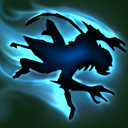 Shukuchi
Shukuchi available) and some extra damage to help your last hitting and harassment. For the price it's really good.
Personally I prefer
 Power Treads
Power Treads over
 Phase Boots
Phase Boots on
 Weaver
Weaver - they give you more flexibility to increase your mana or health as required, as well as boosting your basic damage output (i.e. without
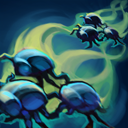 Geminate Attack
Geminate Attack).
 Phase Boots
Phase Boots do boost
 Geminate Attack
Geminate Attack damage, but the active is pretty useless for you, and they limit your late game damage.
Optional:



I wouldn't pickup these items in that many games, but they can be a useful adjustment to your build in many situations. Usually I'll get them when things aren't going very well, or I need to tailor my build for the midgame (e.g. you have a hard carry on the team who will need space creating for them).
The
 Drum of Endurance
Drum of Endurance is basically a cheap way of bulking out your stats - a nice
 Bracer
Bracer early on can make you considerably tankier, and it will also help with your damage and mana. The AS/MS boosts aren't terribly relevant, but still help a little - however the main point of this item is to quickly make you more resistant to burst damage. In comparison, you could pickup an
 Ultimate Orb
Ultimate Orb for 2100 gold which is part of a
 Linken's Sphere
Linken's Sphere - however, that's one large purchase, compared to lots of small ones.
 Medallion of Courage
Medallion of Courage is an interesting one - stacking armour onto
 Weaver
Weaver isn't particularly necessary - this is far more about picking up kills using the active. It's a very aggressive choice, and in an ideal world a support would pickup one instead - however, it can quickly pay for itself if you bag some kills. Again, this is a good way of impacting the midgame and creating space for a harder carry.
Finally - the
 Magic Wand
Magic Wand. I have mixed feelings about this item on
 Weaver
Weaver - on the one hand, I'd prefer an item that gave you more stats, and wasn't another instant/reaction based defence -
 Weaver
Weaver is already very reflex based, and this item does nothing to reduce that issue. However, due to your limited health/mana pools, a wand is capable of restoring a considerable amount of both at lower levels.
Defensive:


In the majority of games you're want to pick up a defensive item to protect you against spells relatively early on. They're not core because occasionally you may be able to go straight for a damage item if the opposition have made really poor picks against you, or your team is stomping hard.
The choice of defensive item is also very important to consider - they're not cheap, and their usage is quite different. As a carry, it's your responsiblity to deal damage, and I'd say you need a damage item right after your defensive one. You could potentially pickup the 2nd defensive item (if necessary) after this as a "luxury".
Many people regard
 Linken's Sphere
Linken's Sphere as a core item on
 Weaver
Weaver...but I don't agree. While it's a great item, there are occasions where a
 Black King Bar
Black King Bar is more appropriate, and you need to weigh up the situation before spending your gold.
 Linken's Sphere
Linken's Sphere suits your "hit and run" style extremely well - often protecting you from a stun and giving you time to Shuki away. It also has the advantages of offering improved stats and regeneration. It can protect you against some of your strongest counters - like
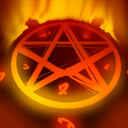 Doom
Doom,
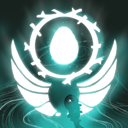 Ancient Seal
Ancient Seal and
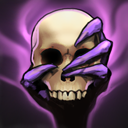 Fiend's Grip
Fiend's Grip.
However, it can only protect you once every 17 seconds, and only against spells which were directly targeted upon you. Wily opponents will often use a less potent spell to remove it, before hitting you with the sucker punch.
 Black King Bar
Black King Bar doesn't offer the regen benefits of
 Linken's Sphere
Linken's Sphere, or the passive protection. It's power runs down with repeat uses. However, it does let you stand up in a teamfight or gank situation and keep the majority of spells from hurting or stunning you. This can be pretty important for a hero who doesn't excel in these situations normally.
My normal consideration here is the balance of abilities that my opponents have - if they have a multiple stuns (especially AOE ones), silences and burst damage, BKB is usually the best choice. Linken's is extremely good when they don't have so many, or if you're against heroes who have magic immunity piercing abilities.
Damage:




These are my usual "go to" damage items on
 Weaver
Weaver after completing a defensive item - hell, in some games I may even skip straight to them. Each offers a slightly different strength...
 Monkey King Bar
Monkey King Bar offers a really big boost to raw damage, and also prevents attacks missing through height or evasion. It can also mini-stun opponents, breaking channelling abilities like
 Town Portal Scroll
Town Portal Scroll. It's my standard choice if my opponents have any kind of evasion ability (like
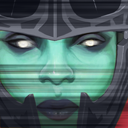 Blur
Blur or a
 Butterfly
Butterfly), and if I have missed a few kills through enemies being smart enough to TP away.
 Desolator
Desolator is a cheaper option, but still hits very hard thanks to it's armour reduction, which also makes it great for pushing, and for helping heroes on your team with strong physical damage. The only draw back is that it uses up your UAM/Orb slot, so closes off other options such as
 Satanic
Satanic or
 Eye of Skadi
Eye of Skadi.
 Crystalys
Crystalys is an interesting item, offering more raw damage and the possibility of crits at a very low price. Generally I like to pickup crits a little later in the game (they stack with AS and damage), but this can be a good option if you need some extra punch and don't have much gold. Upgradable to
 Daedalus
Daedalus.
 Diffusal Blade
Diffusal Blade is another alternative - it's relatively cheap and gives you mana burn as well as agility and intelligence. I don't think purge is particularly useful on a hero as mobile as
 Weaver
Weaver, but it can still be handy in some situations. Especially good when the opposition have mana reliant heroes like
 Wraith King
Wraith King or
 Medusa
Medusa.
Luxury:






I'd frequently recommend you pick up the "other" item from the defence or damage item sets in addition to some of the choices here. However, I did want to include some suggestions for some additional items as you'll often have that kind of farm when playing
 Weaver
Weaver.
 Butterfly
Butterfly is a nice mixture of defensive and offensive power. It improves your armour and gives considerable evasion to physical attacks, while also boosting your damage and attack speed. Most useful in the late game where crits from enemy carries can get scary.
 Heart of Tarrasque
Heart of Tarrasque is the most potent item in the game for increasing the size of your health pool - which can be very useful on a hero like
 Weaver
Weaver, and combines extremely well with
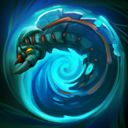 Time Lapse
Time Lapse. The rapid health regeneration away from combat can also be very handy, as you're quite good at slipping away and then back in again. However, it does nothing to boost your damage.
 Satanic
Satanic is a riskier alternative to the Heart - offering some improved damage and HP, plus considerable lifesteal. The main issue with this is that you need to be attacking in order to regen, and have enough damage to make the lifesteal worthwhile. However, it does let you stand up more in a straight fight - just be aware that it won't work with
 Desolator
Desolator.
 Eye of Skadi
Eye of Skadi I've included here, although in some ways it's almost an alternative to the Damage and Defence route. It offers considerable stats as well as a powerful attack and movement slow. However, the issue I have with it is that it does nothing to protect you from damage/disables, and doesn't offer enough raw damage to make you effective. Still a good end game item if you get the gold together.
 Boots of Travel
Boots of Travel as always, a useful late game option for global mobility and to save an item slot. The movement speed boost isn't particularly good for
 Weaver
Weaver, so you're buying it purely for the utility.
 Daedalus
Daedalus - the daddy of damage item, this works best when you already have considerable damage from other items, offering big crits and yet more raw damage. Not as reliable as the other options, but can inflict serious harm.
 Manta Style
Manta Style - this is not a typical pickup on
 Weaver
Weaver for several reasons - lack of stats means weak illusions, and he doesn't need the movement speed buff either with Shuki available. However, it can be useful for debuffing more effects, increasing your firepower and offers respectable stats. Situational.
 Tango
Tango






































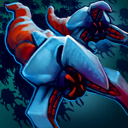












Quick Comment (17) View Comments
You need to log in before commenting.